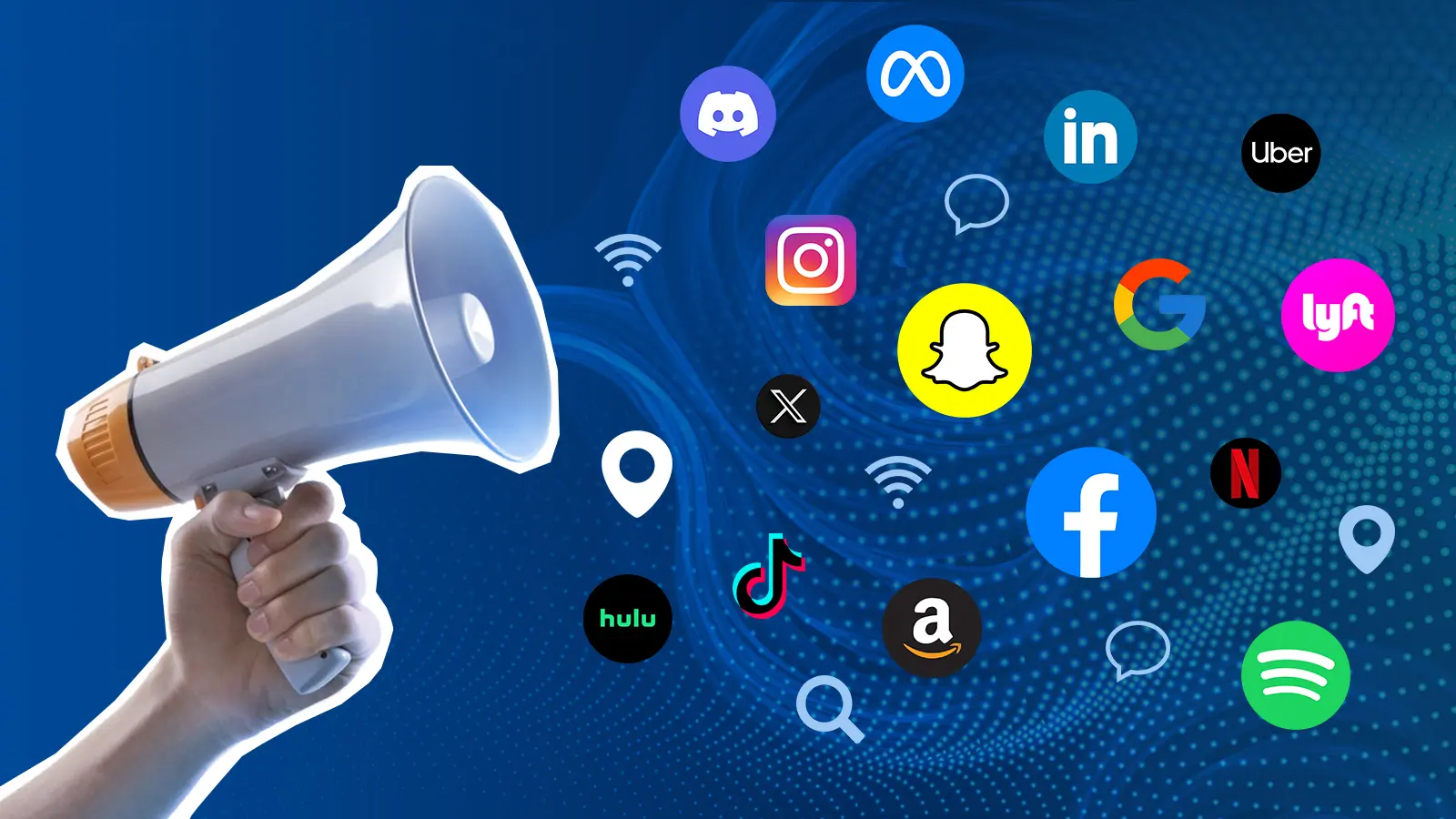Content moderation on digital platforms is like tending to a vast garden. You have the tools – pruners for harmful weeds and seeds to grow nourishing plants. Here, in this digital space, our weeds are toxic speech, and our seeds are the posts that enrich our online experience. As keepers of this virtual environment, we face a challenging question: how do we encourage lush, diverse thoughts to flourish while keeping the grounds free from harm?
Dive deep with me as we explore the intricate balance of fostering dialogue and safeguarding digital communities. We need sturdy gloves for the thorns of censorship claims and the sharpest sheers for the ever-growing bramble of unsafe content. Get ready to clear the path toward a more civil online world.
Understanding the Landscape of Content Moderation
Difference between Content Filtering and Censorship
What’s the deal with online filters and bans, right? We hear about “content filtering” and “censorship” all the time. They sound similar but have big differences. Content filtering means stopping bad stuff before it gets online—like a net that catches harmful words and pictures. It’s used to keep us safe.
For example, social media sites have rules—no hate speech, no bullying. Content filtering uses these rules to block the nasty before it spreads. They want fun, not fights on their sites. On the other hand, internet censorship is harsher. It’s when someone with power—sometimes a whole country—blocks or deletes stuff they don’t like. They may block news, opinions, or anything they disagree with.
Balancing User Safety with Freedom of Expression
Let’s talk about walking the tightrope. On one side, there’s user safety online. No one should face hate speech or cyberbullying when they’re just trying to have fun online. Digital platform policies use guidelines to stop this bad stuff. They work hard to keep everyone safe.
But here’s the tricky bit—freedom of speech. Everyone has a voice online, and they should. It’s about sharing ideas, big and small. So platforms can’t just take down everything they don’t like. They must respect our freedom to talk our talk, but also keep the bullies out.
Figuring this out ain’t easy. It’s like a puzzle where all the pieces keep changing shape. Hate speech control is needed, sure, but not so much that it silences good folks. Detecting online harassment is a must-do, but it’s just as important to let people speak freely on the web.
Some people worry that this is slippery. They say, “What if the platforms get too controlling?” That’s a fair worry. Tools like automated moderation tools help, but they’re not perfect, just like us. Sometimes these tools mess up. The platform might say, “Oops,” and a post that’s okay might get pulled down by mistake. That’s where a user appeals process comes in. It’s like saying, “Hey, I think you got this wrong,” and the platform takes another look.
Keeping it all fair is about balance. It’s about community standards enforcement, but also making sure we get to say what’s on our minds. Artificial intelligence in content moderation plays a big part—it’s getting smarter every day, helping sort stuff out faster. But, we still need human brains in the mix. Algorithmic bias is a sneaky thing—computers can pick sides without meaning to.
In the end, we need clear rules, smart tools, and an open heart to keep online spaces safe and free. I think we can get there. It’s about learning and tweaking the levers as we go, making sure we catch the mean stuff while letting the good stuff thrive. It’s a new frontier, alright, but together, we can make it friendly for everyone.
The Tools and Policies for Enforcing Civility Online
Artificial Intelligence and Automated Moderation Technologies
Let’s dig into how we keep online chats nice. Imagine a robot that knows right from wrong. That’s kind of what artificial intelligence (AI) is in our online world. It scans tons of posts lightning-fast. AI looks for bad stuff before we even see it. This helps a lot. Bad words? Poof – gone. Scary pictures? Zap – they’re out. But AI isn’t perfect. Sometimes it messes up and blocks good stuff. Or it misses sneaky bad posts.
AI uses rules to find mean words or bully talk. These rules can also find fake news. AI is like a filter. It tries to let only the good stuff through. Have you ever used a strainer in the kitchen? It’s like that but for words and pictures online. It catches the lumps you don’t want in your cake. Or in our case, stuff we don’t want kids to see.
Yet, AI can still learn and get better. It’s kind of like training a puppy. The more it learns, the better it gets at helping us. But we need real people to help make sure it’s working right. They double-check that AI didn’t miss any bullies. Or hasn’t been too tough on what it blocks.
Community Guidelines and User-Generated Content Management
Now let’s chat about rules everyone must play by online. Every digital platform has a list of dos and don’ts. These are community guidelines. Think of it like rules at a playground. No pushing. No mean names. Share the swings. Just like at the playground, rules make sure everyone stays safe and has fun.
For online places, these rules say what’s cool to share and what’s not. They stop nasty words, bullying, and other rough stuff. Everyone who posts, talks, or plays online has to follow these rules. If they don’t, their stuff might get taken down. It’s like if you scream on the playground, you might have to sit out for a bit.
But hey, we still want you to be you. So, be creative in what you say and share. Just be kind and think before you hit send. If you slip up, don’t sweat it. You can usually ask for another look in what’s called a user appeals process. Imagine asking a ref for a timeout to talk things over.
Keeping the internet a cool place takes work. You’ve got your AI tech, your human checkups, and your rulebook. Mix them all up, and you’ve got a recipe for a friendly, safe online world. A world where we can all speak our minds, without fear or fights. We all want that, right? So let’s play fair and help others do the same. Together, we can make sure the internet stays a fun, awesome place to hang out.
Rights, Responsibilities, and Enforcement on Social Platforms
Defining Hate Speech and Objectionable Content
What is hate speech? It’s when someone uses words to hurt or insult a group of people. Our job on social platforms is to spot this bad talk and stop it. But it’s tough. Each place online may see it differently. We use guides that tell us what’s allowed and what’s not.
Let’s dive deeper. Online content filtering practices help us keep hate speech off platforms. These use rules to block bad words or ideas. Social media regulation is the set of rules for what you can post online. User-generated content guidelines help users understand what they can share. They show what might count as internet censorship, which is when someone stops others from saying things online. These rules also tell us how to handle hate speech control and cyberbullying prevention methods.
We use tech to find mean words or bullying in posts. That’s detecting online harassment. It helps us keep the web safe, which is user safety online. Digital platform policies guide us on what to do when we find bad stuff. But it’s a hard job. The rules have to be clear for everyone. Plus, we need to be fair. If our tech messes up and blocks a good post, we need to fix it. That’s why we have a user appeals process.
What’s tough is that tech, like artificial intelligence in content moderation, can be wrong sometimes. It might not catch all bad posts, or it might block good ones by accident. This is why having real people check things is important too. We call these folks content review teams.
We work hard to be open about why we remove posts. That’s transparency in content removal. We want users to trust us. But we also protect free talk online, which is freedom of speech and moderation. That’s the balance we must strike between internet censorship and letting people share their thoughts.
The User Appeals Process and Platform Accountability
Make a mistake? We want to fix that. Say you share a post, but our tools say it’s bad and remove it. You don’t agree, so you ask us to check again. That’s the user appeals process. You tell us, “Hey, take another look at this.” We listen and review it.
Why does this matter? Responsibility. Digital ethics and governance demand we be fair. When we talk about platform liability and user content, we mean who’s at fault if something goes wrong. If a bad post stays up, that can hurt someone. We don’t want that. But if we remove a good post, that’s not right either. So, we must be super careful.
Mistakes show us how to improve. They teach us about the challenges in moderating content. Sometimes, we learn that our guides aren’t clear enough on what counts as objectionable content parameters. Or we find out that our automated moderation tools have algorithmic bias in content regulation. That means they might not be fair to all posts because of how they’re programmed.
We take care of these issues by updating our guides and tools. This way, we work towards maintaining user engagement and content policing fairly. Protecting minors from harmful content is also a big deal for us. Kids should feel safe online, just like everyone else.
So there you have it. We’re always working to make the online world a kinder place for you to talk, share, and learn. It’s a big task, but we’re up for the challenge. We take our role seriously and want everyone to have a good time online, safely and responsibly.
The Future of Online Interaction and Regulation
Emerging Challenges in Digital Ethics and Content Moderation
The web is vast, and it’s a wild zone full of words, pictures, and videos. People from all walks of life meet online. They share, chat, and often clash. It’s my job to map the fine line between free talk and harmful speech. The goal is always clear—keep the digital town square safe, yet free-spirited. There’s no perfect method, but I always aim for fairness.
Imagine a huge wall where anyone can scribble whatever they want. That’s the web for you. But some things just aren’t okay. Here’s where online content filtering practices come in. These are the rules that tell us what’s cool and what’s not. Think of these as the red and green lights on the web’s traffic signals.
Now, not all filtering is about clamping down. Sometimes, it’s about shielding eyes from things they shouldn’t see. Here’s where protecting minors from harmful content gets crucial. No kid should stumble upon scary stuff online. It’s about crafting online paths that are safe for tiny feet to tread.
The challenge is huge. It’s like finding a needle in a haystack. Every day, a sea of new posts hits the web. Enter Artificial Intelligence in content moderation. These smart tools scan heaps of data to flag the no-nos. Yet, they’re no brainiacs; they make mistakes. That’s why human touch still counts—a lot.
What about the people behind the screens, though? The content review teams work day and night, reviewing things that can’t be unseen. This job takes a toll, so their well-being is key. Mental health support and breaks are a must to keep the watch-guardians in good spirits.
Protecting Vulnerable Groups and Promoting Digital Citizenship
Everyone deserves a safe spot online, yet some face nastier winds. Vulnerable folks, like kids or those bullied for who they are, need extra walls of safety. We talk often about digital citizenship and responsible posting. It’s simple, really. Before you post, ask, “Would I say this face-to-face?” It’s like having a little angel on your keyboard, guiding each word.
User safety online isn’t a one-man show. It’s a team sport. So, digital platform policies must be clear. Each web place should have rules that are easy to get. Much like the rule book of a board game, they let you know how to play nice and what moves aren’t cool.
Then comes the hard part—enforcing those rules. Community standards enforcement is like being a referee. You have rules, a whistle, and a watchful eye. Some calls are easy; some are super hard. However, even referees need to explain their calls. Transparency in content removal is like showing a slow-mo replay. It helps users see why a post was benched.
Freedom of speech and moderation may appear to be on different teams, yet they both play for Team Internet. The trick is to let voices sing but not scream fire in a crowded web room. It’s like aiming for a harmony where lyrics may vary, but tunes must be kind.
There’s no perfect playbook for this digital game. But one thing’s sure, the future of online interaction hangs on smart rules, fair play, and a pinch of compassion. The web’s a shared space where each of us can help keep the noise down and harmony up.
We’ve seen how content moderation shapes our online world. We looked at the fine line between filtering stuff and outright censorship. It’s tough to keep the web safe while letting people speak freely.
In our digital society, tools like AI help us filter out the bad. We rely on community rules to guide what we share. But tech isn’t perfect. Sometimes, good posts get blocked, and offensive ones slip through.
We all have rights online, but we must also be responsible. Not all content is okay. Hate speech can’t have a place in our chats and posts. And when mistakes happen, people need a way to make things right with the platforms.
Looking ahead, the web’s still changing. We’ll face new ethical puzzles. We’ve got to stand up for those in harm’s way while we all learn to be good digital citizens.
So let’s keep talking and sharing smartly, keeping the web a place where we can all feel at home.
Q&A :
What is content moderation on digital platforms?
Content moderation refers to the process by which digital platforms screen and monitor user-generated content to ensure it follows certain rules, guidelines, or laws. This often involves the removal or promotion of content, such as comments, videos, or images, in order to create a safe and inclusive environment for all users.
How does content moderation work on social media?
Content moderation on social media typically combines both automated and human oversight. Algorithms and AI systems scan for specific content that violates the platform’s policies, such as hate speech or graphic violence, while human moderators review content flagged by users or the system itself to make nuanced decisions on what content should be removed or restricted.
What are the challenges of content moderation?
Challenges of content moderation include the massive scale of data, the need for quick response times, and the difficulty of context interpretation. There’s also the delicate balance between protecting freedom of expression and maintaining community safety. Additionally, content moderators can face psychological stress due to exposure to harmful content.
Why is content moderation important for online communities?
Content moderation is vital for maintaining healthy online communities as it helps prevent the spread of harmful content that can lead to real-world consequences. It protects users from exposure to offensive and dangerous material, and upholds the standards and values of the digital platform, thereby fostering a positive user experience.
Can content moderation impact freedom of speech on digital platforms?
Content moderation can impact freedom of speech, as it involves determining what content is acceptable and what isn’t. While moderation is important for protecting users and maintaining community standards, it can also raise concerns about censorship and the suppression of legitimate expression. Platforms strive to balance moderation with respect for users’ right to free speech.



